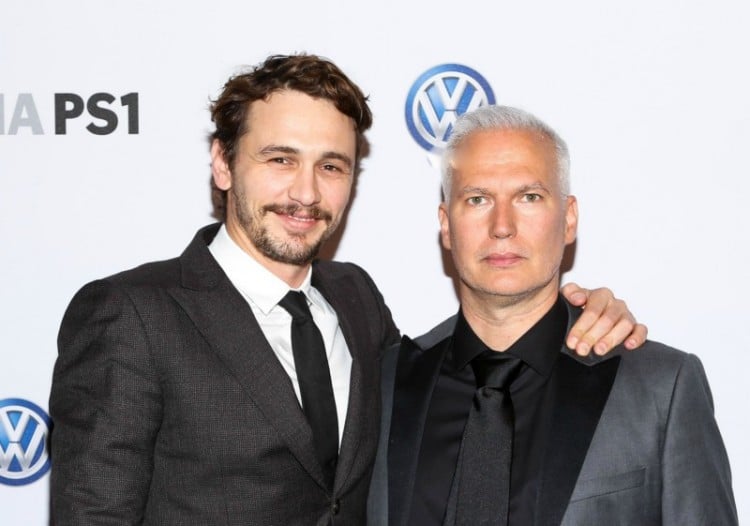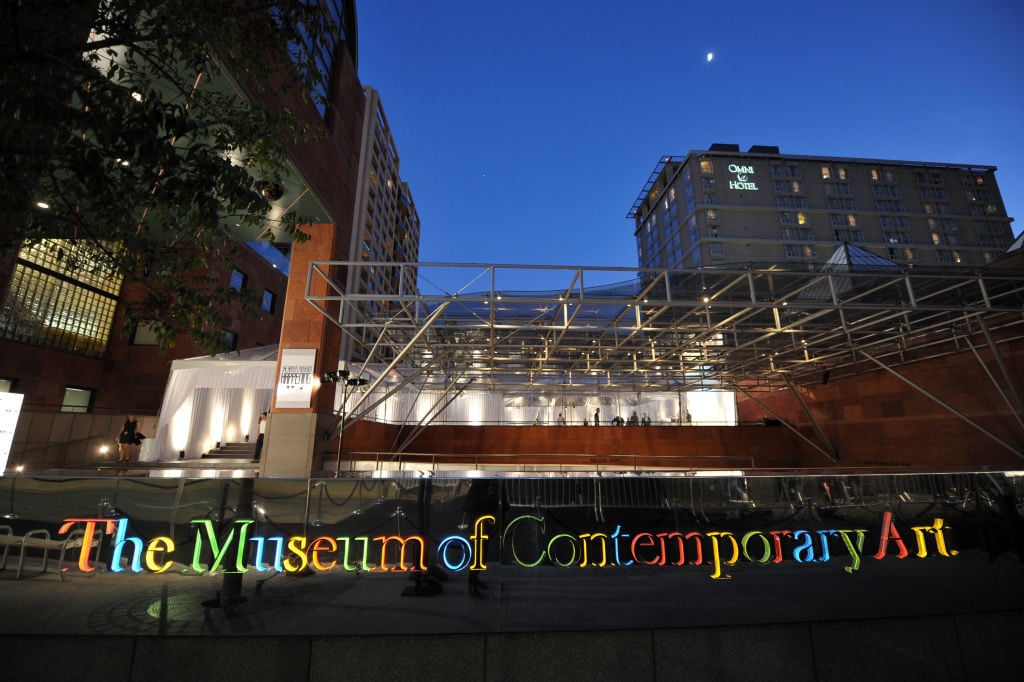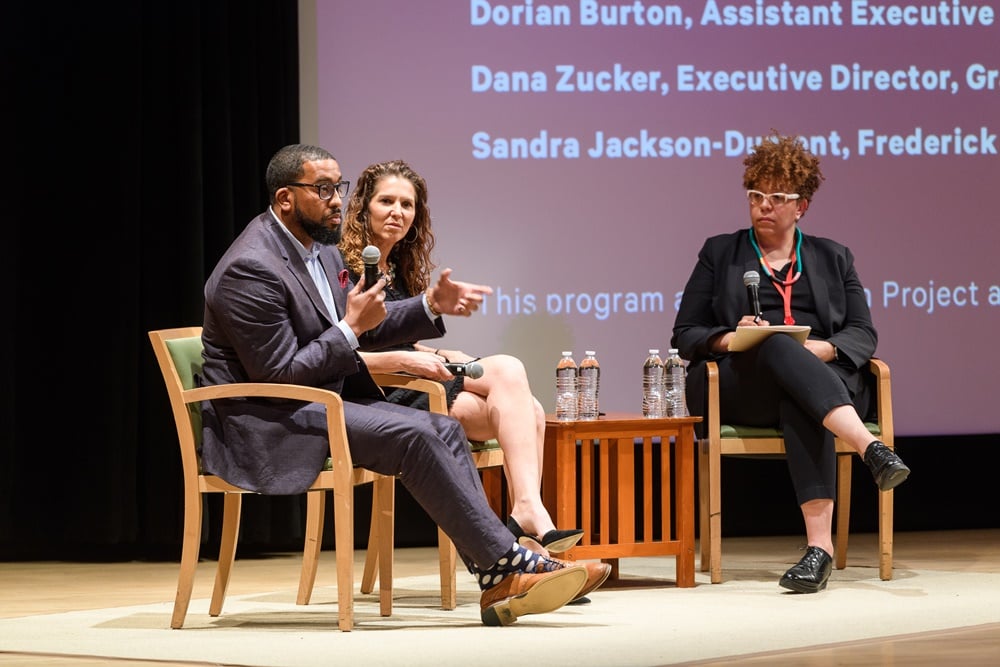Opinion
The Gray Market: The Biggest Tension Behind Klaus Biesenbach’s New Gig at MOCA (and Other Insights)
Our columnist on Klaus Biesenbach's main challenge at MOCA, France's Culture Pass, and a game-changing donor for social practice artwork.

Our columnist on Klaus Biesenbach's main challenge at MOCA, France's Culture Pass, and a game-changing donor for social practice artwork.

Tim Schneider

Every Monday morning, artnet News brings you The Gray Market. The column decodes important stories from the previous week—and offers unparalleled insight into the inner workings of the art industry in the process.
This week, stories about the right to choose in the arts—and the distinct possibility of getting those choices wrong…

The facade of the Museum of Contemporary Art in Los Angeles. Image courtesy of MOCA.
On Tuesday, Los Angeles’s Museum of Contemporary Art (MOCA) announced that it had hired Klaus Biesenbach, director of MoMA PS1 and chief curator at large for the Museum of Modern Art in New York, to replace outgoing director Philippe Vergne. According to MOCA, Biesenbach emerged as the unanimous choice from a list of 40 candidates subsequently winnowed to a final four. His start date is still to be determined.
Although Biesenbach’s dual titles at MoMA imply a healthy mixture of responsibilities, it’s fair to say that he is known in the art industry more as a curator than an administrator. Amid dozens of other shows at PS1 and the MoMA mothership, his most indelible—for better and worse—are his retrospectives of Marina Abramović in 2010 (“The Artist Is Present,” whose corresponding hit documentary almost undoubtedly made him the most recognizable museum executive in the world) and Björk in 2015 (the self-titled exhibition that was panned harder than a countertop cockroach in a truck-stop diner).
If you’ve read anything else about Biesenbach’s next act with MOCA, you know there are numerous tensions involved in the partnership. But I suspect one of the primary ones to be between stewardship and ambition. This is due in no small part to the readymade Pepsi Challenge laying in wait for Biesenbach vis-à-vis two of MOCA’s local competitors (or, to be diplomatic, let’s say “peer institutions”), both of which are in the midst of glamorous metamorphoses.
Navigate online to either LACMA’s “Transformation Campaign” or the Hammer’s “Museum Transformation” page—yes, the city currently has two art institutions going full Optimus Prime—and you’ll find troves of detailed information and luscious imagery on hundreds of millions of dollars’ worth of big dreaming. The Hammer’s significant architectural expansion is already underway. LACMA’s square-one rebuild is fast approaching a moment of truth on the fundraising time clock. But no matter how it shakes out, director Michael Govan is also striking historic collection-sharing agreements and working to launch satellite locations in traditionally underserved neighborhoods in South Los Angeles.
Bottom line: While these initiatives require lots of hard work, they are also exciting, widescreen vision projects, where you get to don the Tom Ford sunglasses and point influential figures toward the horizon. In comparison, MOCA’s directorship most needs someone to strap on canvas coveralls and lug the administrative toolbox into the boiler room.
When it comes to art-business issues, I generally move in a very different tribe than Los Angeles Times art critic Christopher Knight. But I largely agree with the to-do list he put together for Biesenbach the day after news of the hire broke. Of the four items on that list, only one (“Get LA-centric”) had a curatorial component to it.
The other three all covered terrain that falls squarely into a category I’d define as “boring but important”: reconstructing a robust staff (particularly in the curatorial department), making over an often-criticized board (which was given “a vote of no confidence” by departed artist-trustee Lari Pittman early this year), and eliminating admission fees. (MOCA is one of the few LA art institutions that still requires paid tickets—unlike the Hammer, the Broad, the Institute of Contemporary Art Los Angeles, the California African American Museum, the Marciano Art Foundation, the Getty, and even MOCA affiliate the Underground Museum.)
The question is whether Biesenbach is ready to immerse himself in this dunk tank of mostly wonky priorities. In Jori Finkel’s “Reporter’s Notebook” on Thursday, Biesenbach countered the popular barb that he’s become overly fixated on celebrities and pop culture by saying the projects that created that perception were nothing more than a past “series” about “people who work between media,” which he would not repeat.
Although I’m wary, I’ll give Biesenbach the benefit of the doubt here. I worry (a lot) about our growing resistance to letting people redeem themselves for low-stakes screw-ups. It has been three years since Björkmageddon, with no similar face-plants to speak of.
And even if Biesenbach continues to glom onto celebrities in his personal time, having an attraction to glamour and being a good museum director aren’t necessarily mutually exclusive. I lived in the Los Angeles art world for 13 years. Suffice it to say that Michael Govan’s much-admired work remaking LACMA hasn’t exactly come out of a monkish devotion to avoiding the spotlight.
At the same time, the reality is this: Right now, in a Los Angeles museum landscape dominated by majestic visions, MOCA’s revival demands near-sighted grunt work. Will Biesenbach prioritize administrative necessities over grand ambitions, especially when his new city’s peer institutions are selling big visions? Or will he cave to the impulse to fight glamour with glamour before first setting the museum back on sound footing?
I don’t know. But I think his success (or failure) as MOCA’s next director hinges on the answer.

French Culture Minister Françoise Nyssen. Image courtesy of Wikimedia Commons.
On Wednesday, my colleague Naomi Rea checked in on Culture Pass, the French Ministry of Culture’s new mobile app designed to incentivize teenagers to engage with the arts. (The initiative should not be confused with New York City’s project of the same name, which offers limited entry to 33 cultural institutions to anyone with a local library card.)
While French app will geolocate nearby cultural attractions for all users, 18-year-olds get the biggest benefit of all: a €500 credit that can be applied toward “events—including movies, concerts, and theater—and goods such as books, musical instruments, and DVDs,” as long as it’s used before the recipient turns 19.
I would be tremendously happy if Culture Pass exposes thousands of French teens to meaningful arts experiences. The question is whether it’s properly designed for that purpose—or ever could be, in a market-based form.
Here’s what I think is the central issue: In order for Culture Pass’s €500 credit to work, the government needs to clearly define what qualifies as “culture”—which also necessarily means defining what does not.
That isn’t just really hard from an intellectual standpoint. It’s also really loaded from a political one.
For instance, in an earlier draft of this piece, I made a snarky comment about how any government official who thinks 18-year-olds want to own a bunch of DVDs in 2018 probably doesn’t have enough of a concept of contemporary youth culture to be trusted designing an initiative like Culture Pass.
But what if you’re a young cinephile who wants to see obscure classics unavailable on Netflix or Amazon? Or what if you’re interested in film as an art form, but you don’t even have a streaming account with Netflix or Amazon—both of which offer hundreds of true classics—because you don’t have dependable high-speed internet access?
If the state just wanted to prevent kids from blowing cultural credits on, say, watching Dwayne “The Rock” Johnson battle a giant crocodile in the schlockbuster Rampage, would the Ministry of Culture have to select which types of movies qualify as “culture” and which don’t? Or should Culture Pass simply exclude the option of spending credits on movies, period?
Wouldn’t either one of those options be blasted—not unjustifiably—as discrimination, if not censorship?
You could make similar arguments about almost every easily criticized element of Culture Pass. Rea points out that the pilot program currently allows recipients to buy video games. (French Culture Minister Françoise Nyssen says the government is still exploring tweaks ahead of a larger roll-out in the coming months.) France Inter noted that teens who received a similar monetary credit for culture in Italy “mostly bought music online.” And the Italian experiment also created a black market where unspent cultural credits could be exchanged for electronics or straight-up cash.
It’s easy to call these aspects unacceptable loopholes. But wouldn’t it be naïve to assume that it’s easy for every teen in France to be able to get to the Louvre, the Paris Opera, or any other traditional bastion of high culture for in-person programming? So if Culture Pass eliminated buying or renting cultural goods, isn’t there a good chance it would disadvantage some of the most underserved young people in the country?
And besides, it seems a little narrow-minded to assume that spending €500 on music—even pop music—as an 18-year-old is an automatic waste. Say it launches you into a career as a songwriter, producer, or composer (or even just an audiophile whose life is richer for your interest). I’ve also met several digital artists this year who all got their start through playing video games.
Is it fair to cut off these possibilities just because some other young people who may never have been that interested in culture anyway inevitably gamed the system? How exactly do you quantify the return on investment here?
As usual, I think it’s arrogant for those of us in the arts to assume that everyone will, and more to the point, should be interested in the same things we are. At the same time, I also think every young person should be exposed to the arts—ideally with some freedom of choice involved—to see what might excite them.
The problem, as I hope this thought exercise shows, is that designing a fair Culture Pass-like program is harder than trying to ace a calculus exam the morning after a reckless night at a mezcal bar.
That isn’t to say that France’s Ministry of Culture got the initiative right. It’s to say that I’m beginning to doubt a market-based system is the right solution to the problem it’s trying to solve.

L to R: William R. Kenan Jr. Trust assistant executive director Dorian Burton, Gray Foundation executive director Dana Zucker, Kenan Trust adviser and Metropolitan Museum of Art director of education Sandra Jackson-Dumont. Photo: Filip Wolak.
Finally this week, my colleague Eileen Kinsella introduced us to the William R. Kenan Jr. Trust, the under-the-radar nonprofit that may have done more to seed social practice art in prestigious American museums and residential communities than almost any other. And yet the ratio between the scale of its giving and its impact teaches us an important lesson about effective philanthropy, especially in the art and culture sphere.
Since 2017, the Kenan Trust has directed a total of $6 million to what it has dubbed the New York City Arts Collaborative, a consortium of 21 Gotham-based organizations ranging from scrappy nonprofits like STEM from Dance and the Laundromat Project to titanic institutions like Columbia University and the Guggenheim (which, side note, used some of its Kenan cash to fund Shaun Leonardo’s Primitive Games, a project I wrote about a few months ago).
Earlier this summer, the Metropolitan Museum of Art also used what Kinsella called a “king-sized” $1.5 million grant from the trust “to support an artist residency program dedicated to social change.” The residency was made possible by one of Kenan’s core characteristics: that it is “fundamentally opposed to telling organizations how to do their job and exactly what to do with the money it donates.”
Through its mentality and approach to giving, the Kenan Trust exemplifies what is referred to in the nonprofit sphere as “catalytic philanthropy,” or donations targeted toward underfunded areas in an effort to create maximum positive change. Put another way, it’s the idea that you can make a bigger difference by donating to needier causes than well-funded ones. (If you want to investigate this idea in narrative form, I highly recommend My Little Hundred Million, an episode in the first season of Malcolm Gladwell’s Revisionist History podcast.)
Now, the $6 million the Kenan trust funneled into the New York City Arts Collaborative counts as a substantial gift. But compare it to some others we’ve seen in the museum sector recently, and it suddenly starts to look about as conservative as an Amish fashion guide.
Just this week, for example, the Barnett and Annalee Newman Foundation donated $10 million to the Jewish Museum to endow the institution’s first curatorship for contemporary art (as well as to help maintain the collection). The same day, we learned hedge fund billionaire Kenneth C. Griffin directed $16 million of a $20 million gift to constructing a new Norman Foster-designed wing of the Norton Museum of Art. And to go back to LACMA’s vision project, last year mogul and mega-collector David Geffen ladled $150 million into the fundraising pot for the museum’s hoped-for, Peter Zumthor-masterminded rebuild.
I’m not saying we should be mad about these philanthropic contributions, and I have no doubt that each of the givers I just mentioned is also funding plenty of more civically engaged causes.
But consider that it’s taken only a few million bucks for the Kenan Trust to supercharge social practice art in New York—and with it, provided what Kemi Ilesanmi of the Laundromat Project calls “the dream scenario” for dozens of under-recognized artists and administrators.
Now think of what a transformative effect other private donors could have on progressive practices or avant-garde art if they dedicated as much of their cultural giving to living artists and early-stage organizations as to glitzy architectural makeovers and traditional administrative augmentations.
There is more private money than ever orbiting arts philanthropy. Here’s hoping more of its earners recognize the huge value proposition in giving to underfunded arts trailblazers—and minimizing the number of strings attached while they’re at it.
That’s all for this week. ‘Til next time, try to choose wisely, no matter what’s on the table.